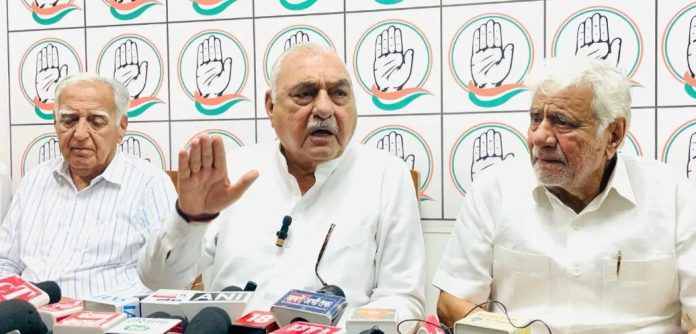The simmering water dispute between Haryana and Punjab has once again reached a boiling point, with opposition leaders in Haryana intensifying their demands for immediate action on the stalled Sutlej Yamuna Link (SYL) canal project. This renewed pressure from the opposition comes amidst the ongoing friction over water sharing, particularly during the crucial Kharif sowing season, and underscores the deep-seated frustration within Haryana regarding its perceived deprivation of rightful water resources. The SYL canal project, a long-pending issue, has become a potent symbol of Haryana’s struggle for equitable water distribution, and the opposition’s forceful stance reflects the urgency and political sensitivity surrounding this matter.
The demand for action on the SYL canal project is not merely a call for infrastructure development; it represents a fundamental assertion of Haryana’s rights to its allocated share of river waters. Opposition leaders argue that the state’s agricultural economy, heavily reliant on irrigation, is suffering due to Punjab’s continued resistance to the project. They contend that the SYL canal is not just a matter of convenience but a lifeline for Haryana’s farmers, particularly in the southern and western districts that frequently face water scarcity.
The SYL canal project, conceived decades ago, aimed to facilitate the sharing of water from the Sutlej and Beas rivers between Punjab, Haryana, and Rajasthan. However, despite numerous court orders in favor of Haryana, Punjab has consistently opposed the project, citing concerns about its own water resources and the potential impact on its agricultural sector. This persistent resistance has fueled resentment and a sense of injustice among the people of Haryana, who feel they are being denied their rightful entitlement.
The opposition leaders’ renewed demands are likely driven by a combination of factors, including the approaching Kharif season, the prevailing water shortage in Haryana, and the political opportunity to capitalize on public discontent. They are positioning themselves as champions of the state’s interests, demanding that the government take a more assertive stance in securing Haryana’s water rights.
They argue that the current government’s inaction on the SYL project is a betrayal of the state’s farmers and a failure to uphold the rule of law, given the Supreme Court’s repeated directives. They are likely to emphasize the economic and social consequences of water scarcity, highlighting the impact on crop yields, farmer livelihoods, and the overall development of the state.

The opposition’s demands also underscore the political dimension of the water dispute. They are using the SYL project as a rallying cry, seeking to mobilize public support and put pressure on the ruling party. They are likely to accuse the government of being weak and ineffective in its dealings with Punjab, portraying themselves as the true defenders of Haryana’s interests.
Moreover, the opposition’s stance reflects a broader concern about the erosion of cooperative federalism in India. They argue that Punjab’s defiance of court orders and inter-state agreements undermines the spirit of cooperation between states and weakens the federal structure of the country. They are likely to call for a more proactive and interventionist approach from the central government to ensure that judicial directives are respected and implemented.
The timing of the opposition’s demands is also significant. With elections looming, the water dispute has become a potent political issue, capable of mobilizing public sentiment and influencing electoral outcomes. By taking a strong stand on the SYL project, opposition leaders are attempting to rally support for their parties and capitalize on the prevailing public discontent.
The Haryana government’s response to the opposition’s demands will be closely watched. They will be under pressure to demonstrate their commitment to the SYL project and to take concrete steps to address the state’s water shortage. However, they will also need to navigate the complex political and legal landscape of the dispute, balancing the need to secure Haryana’s water rights with the imperative to maintain peaceful relations with Punjab.
The central government’s role in resolving the SYL issue is also crucial. As the arbiter of inter-state disputes, the central government has a responsibility to facilitate a fair and equitable solution that addresses the concerns of both Punjab and Haryana. However, finding a mutually acceptable resolution has proven to be a formidable challenge, given the deeply entrenched positions of the two states.
The ongoing water dispute and the opposition’s demands for action on the SYL project underscore the complex challenges of managing shared natural resources in a federal system. They highlight the need for a comprehensive and sustainable approach to water management that takes into account the needs of all stakeholders. The political discourse surrounding the SYL project reflects the deep-seated frustrations and competing interests that characterize inter-state relations in India. The coming months will be crucial in determining whether a resolution can be found, or whether this long-standing dispute will continue to fester.


